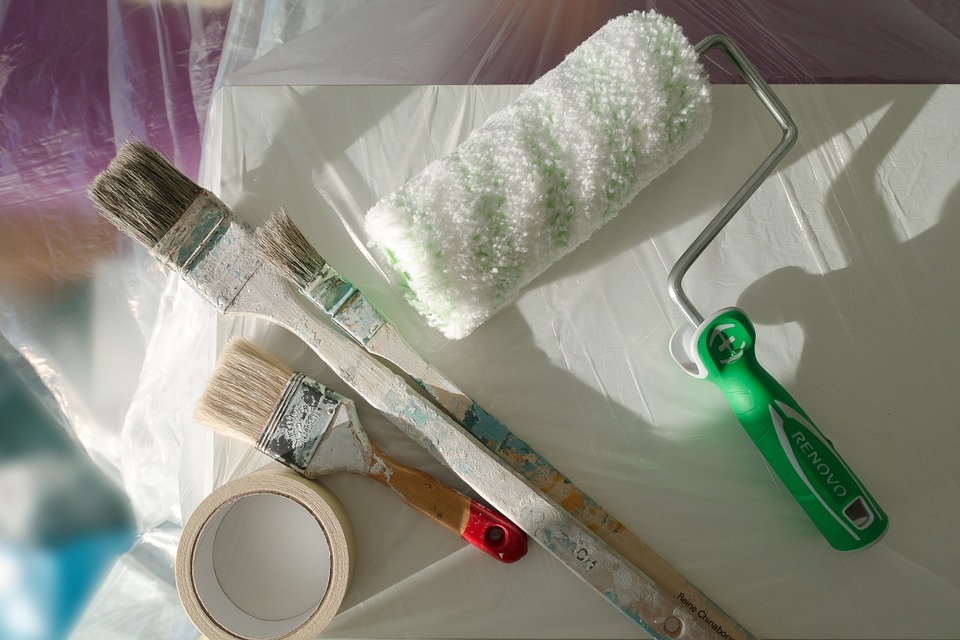Knowing how to choose the right paint tone is key to creating cozy spaces, but it is also essential to prepare the wall in advance, eliminating any damage with a spatula.
Chipped walls and lack of uniformity, flaws in the plaster, coating surfaces with poor adherence to painting, cracks, grease-like dirt, traces of other paints, etc., are some difficulties that you may face before painting the walls ( although all of them can be solved with relative ease). In all these cases, if you do not carry out preliminary work to prepare the walls, you will encounter serious difficulties in painting them and, what is worse, the paint will have a concise, useful life. The consequence of all this is a significant waste of both the time used and the materials used for it. Next, we will know the essential tips that must be followed before painting a wall are.
Materials and tools needed to prepare walls
The materials and tools that we will need to start preparing walls are a roller (which can be fiber, foam, or wool) and spare parts, a spatula, a bucket, plastic to cover, and a manual or automatic sandpaper sponge rollers, paper or taco. In finding defects such as cracks, it will be necessary to have crack repair paste, crack-filling tape, and masking tape. A domestic ladder will be very useful for the high areas of the walls and to access the ceilings.
Step by step to condition the walls before painting
For the preparation of walls before painting, there are three processes that we must always comply with:
1- Evaluate the condition of old paintings as well as coatings
It is advisable to remove the tempera paint that already has the wall, even if it does not show signs of deterioration, since later it can generate problems on the new painting. The plastic paints allow paint, in some cases, over them, although there first to assess their status. Paints and coatings that are directly in poor condition or uneven must be removed.
Although there are specific products for this on the market, applying water is enough to remove almost all the wallpapers that have been marketed in recent times. In cases of maximum encrustation, you can also use a cleaning machine that gives off hot steam and then use a spatula to remove the material. It also gives good results to sand the surface with coarse sandpaper to remove the remains of paper. Vinyl-based papers have a waterproof cover that must be removed.
2- Deep cleaning
The state of the wall conditions having to carry out cleaning in greater or lesser depth. For example, difficult remains, such as those left by oil, can be removed with specific products. Wallpaper glue residue can be removed with a cloth soaked in detergent. Special attention must be paid to humidity; first, their cause must be determined to determine if an intervention should be performed to prevent them. Second, they must be eliminated to condition the walls. If the walls have traces of lime or rust, they must also be cleaned with specific products. If, on the contrary, the surfaces are in good condition, it will be sufficient to remove the dust with a damp cloth.
3- Priming and consolidation
The primer is an essential part of the wall conditioning process because it serves to make the absorption of the background uniform and guarantee the adhesion of the paint, making the paint performance optimal. In addition, it seals the pores and strengthens the wall. Once the previous steps of removing the old paint (if necessary) and deep cleaning have been completed, it is essential to check if there are imperfections, which, if they occur, can be solved with putty. It is recommended then to sand the wall and apply a primer coat with the roller. You can choose between many primers, depending on the surface on which it is used and the composition. The product manufacturer will tell you how long it should be left to dry, which in current solutions is usually short.
You may also want to use Floor Marking Tape if you need to move items that must be put back in the same place after painting.
CONCLUSION
Although sometimes it is not given its importance, correct preparation of the walls before painting is essential to obtain the best results. One of the most important is that before even opening the paint cans, it is necessary to carry out previous work. It is not advisable to skimp to condition the surface properly. A professional painting company like maler will do all these steps for you effectively and efficiently with no extra cost.

